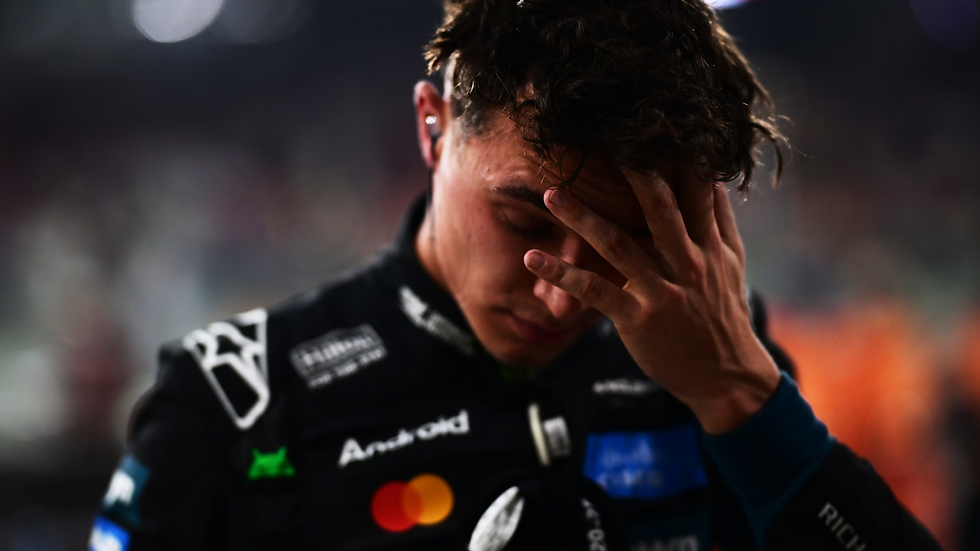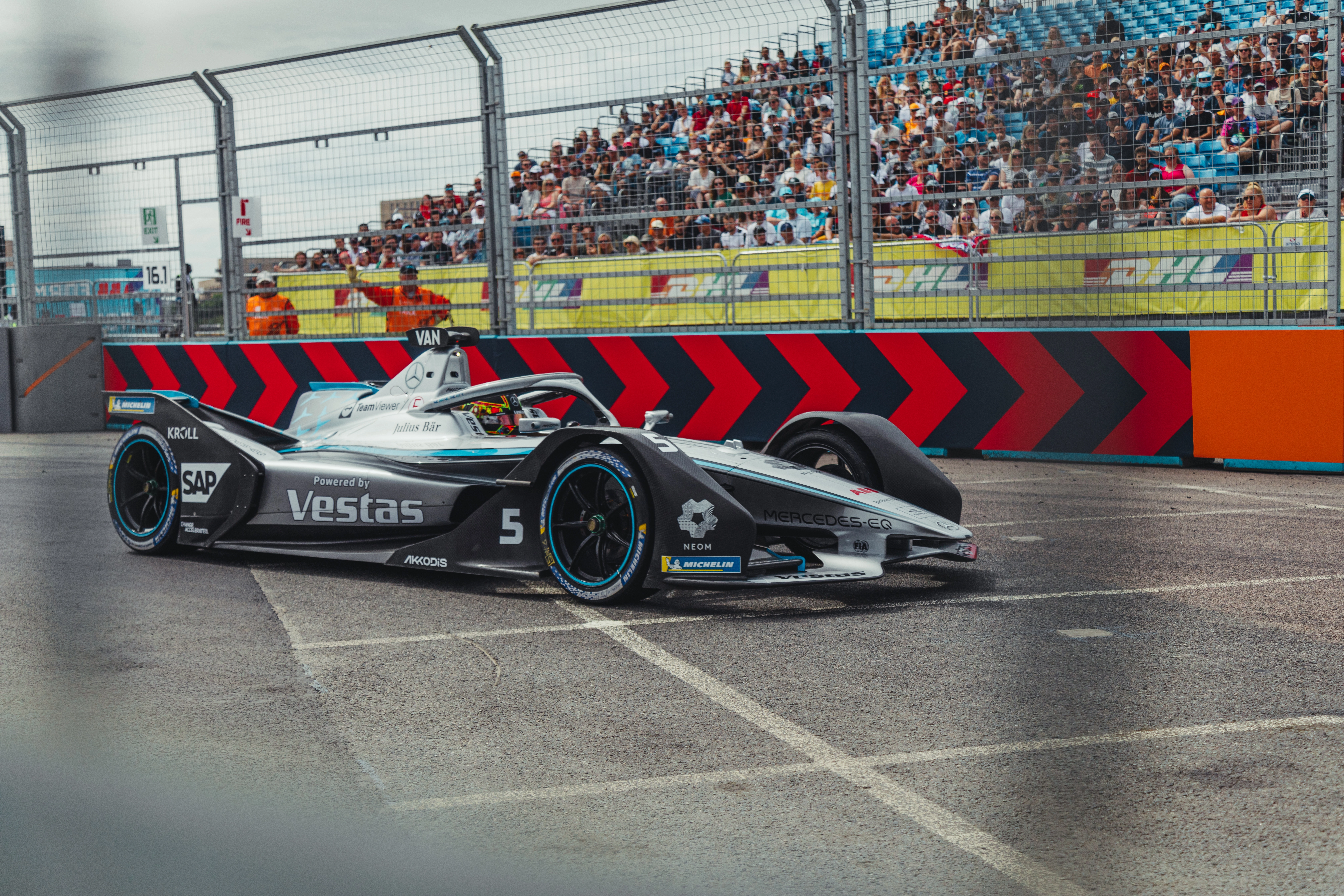Ranking the top 10 drivers with one Formula One start
- Lorenzo Baer

- Aug 7
- 8 min read

Some drivers have long stints in Formula One, with careers spanning several decades in the category. Others have more ephemeral stints, with just one F1 season under their belt. But across the sport’s long history, there have been plenty of drivers to have only raced once. Lorenzo from DIVEBOMB has compiled a rank of the ten best performances from drivers who only competed in a single F1 event. *
10. Warwick Brown: 1976 with Wolf-Williams

Warwick Brown can be considered one of the most successful drivers to have driven in F1 only once, having won multiple events in single-seaters and prototypes during the 1970s.
However, his participation in F1 would be much more discreet. The driver was called up as a last-minute replacement by Wolf-Williams for Kiwi Chris Amon, who had suffered an accident and could not compete in the 1976 United States Grand Prix.
Brown did not waste the opportunity, qualifying 23rd and outpacing his teammate Arturo Merzario. Brown would drive a reasonable race, despite gearbox and brake problems, crossing the line in 14th.
This result left a good impression on Frank Williams, who even offered the Aussie another opportunity in the following race in Japan. But Brown declined the offer, as he was committed to other racing series.
9. Peter Ryan: 1961 with Lotus/J. Wheeler Autosport
Although quite unknown today, Peter Ryan can be considered one of the first great promises of Canadian motorsports. Among his achievements were victory in the very first Canadian GP, held in 1961, as well as trophies in several single-seater events in the Americas during the early 60s.
These results gave him an opportunity to compete in the 1961 United States Grand Prix for the famous Lotus team. Registered under the J. Wheeler banner, the driver showed great pace in the practice sessions, eventually securing 13th on the grid ahead of names such as Olivier Gendebien and Roger Penske. In the race, Ryan would finish ninth – a superb result for the driver in his debut.
However, fate would have it that Ryan would never get another chance in F1. The following year, in a Formula Junior(a grassroots category similar to today's F2) race at Reims, the Canadian would suffer a fatal accident, which would put an end to the career of this promising driver.
8. Jonathan Williams: 1967 with Scuderia Ferrari

As a well-known figure at Ferrari who had driven everything from prototypes to F2 cars for the Scuderia, British driver Jonathan Williams only had one opportunity to drive one of the team's scarlet red cars in F1.
That opportunity came at the 1967 Mexican Grand Prix, and only due to Ferrari's chronic shortage of drivers throughout the season. Unfamiliar with the vehicle, Williams qualified in a modest 16th position on the 19-car grid.
However, Williams was able to demonstrate his talents more consistently in the race itself, finishing in eighth overall – ahead of more seasoned F1 drivers, such as Guy Ligier and Jo Bonnier.
Williams would end his partnership with Ferrari in late 1967, with his focus shifting to racing in F2 and the World SportsCar Championship till early 1970s.
7. Oscar Alfredo Gálvez: 1953 with Officine Maserati
One of the great names of the golden generation of Argentine motorsports in the 1950s, it may seem strange that Oscar Gálvez only participated in one championship F1 event throughout his entire career.
This happened at the 1953 Argentine Grand Prix, when the already seasoned driver was invited to join the powerful Maserati team, made up of aces like Juan Manuel Fangio, José Froilán González and Felice Bonetto.
Against tough opposition, Gálvez set the ninth best time in the practice sessions. Even though the Argentinian had an excellent race, finishing fifth, Gálvez had his result offset by some tragic events of the GP, which is remembered as one of the deadliest in the history of F1 for claiming the lives of 12 spectators.
Despite his experience and proven skills, one of the factors that always held Gálvez back was his constant friction with the Argentine government, at a time when state sponsorship was essential for a stable career in motorsports. This largely explains why the driver only had one shot in F1.
6. Guy Tunmer: 1975 with Team Gunston

Percival Guy Tunmer is perhaps the least known name in this ranking. The driver had emerged in the motorsport scene of South Africa in 1974, when he won the secondary division of the SAF F1 Championship.
This result propelled Tunmer in 1975 to the highly prized cockpit of the South African Team Gunston, which throughout the 1960s and 70s always entered vehicles into local Grands Prix.
Although Tunmer showed little in qualifying, starting from a modest 25th position, he had a remarkable race, finishing in a respectable 11th, ahead of his teammate Eddie Keizan and Lotus driver Jacky Ickx.
Despite achieving good results in South African national events during the next years, Tunmer would never have another chance in official F1 races, with the driver choosing later in the 70s to shift his focus to the business and entrepreneurship world.
5. Peter Broeker: 1963 with Stebro Racing
The second Canadian to appear on this list, Peter Broeker had a rather hazy automotive career before his sole participation in F1. The driver entered the 1963 United States Grand Prix with a car he had built himself, the Stebro.
The vehicle was completely off the pace: during practice, Broeker was 15 seconds off the fastest time and four seconds slower than the second-to-last driver, which left him dead last on the grid.
However, in a race marked by retirements and problems for several high-profile names, Broeker slowly climbed the standings, and by the time the chequered flag fell, he was already in seventh place - the detail however is that the driver was 22 laps behind the race winner!
After trying his luck (without much success) in other European races, driving the Stebro in F2 events, Broeker returned to Canada, focusing on participating in races in his home country.
4. Markus Winkelhock: 2007 with Spyker F1 Team

A member of the Winkelhock family, Markus Winkelhock holds the interesting distinction of being the only driver to go from last to first place in his first (and only) F1 Grand Prix start.
Spyker's reserve driver for the 2007 F1 season, Winkelhock was called to take on a main role in the team for the 2007 European Grand Prix, following the departure of regular driver Christijan Albers.
Qualifying last, Winkelhock started spectacularly in the rain due to a brilliant tyre strategy. Markus led the race while all the other teams brought their cars to the pits to change the dry for rain tyres.
However, Winkelhock’s joy was short lived, as the German was forced to retire on lap 15 due to technical problems.
Despite this amazing performance, Spyker opted to not offer Markus a contract extension for the remaining races of the season, due to contractual and sponsorship conflicts.
3. Eric Thompson: 1952 with Connaught Engineering
Entering the top three of the ranking is Surrey-born Eric Thompson. A veteran of the Second World War, Thompson had an interesting career in motorsport in the post-war period, having collected two class wins at the 24 Hours of Le Mans in 1949 and 1951.
Due to these and other interesting results, Thompson was invited by Connaught to join the team's roster for the 1952 British Grand Prix in a four-driver all-British team.
Thompson managed to set the ninth-best time in qualifying of the 30 drivers participating in the session and surprised everyone when he took his Connaught to fifth place, scoring two points in the World Drivers’ Championship in his only F1 appearance.
Personal commitments, including his official work as an insurance agent and his greater focus on endurance racing meant that Thompson never returned to F1.
2. Kunimitsu Takahashi: 1977 with Meiritsu Racing Team
A winner on both two and four wheels, Takahashi can be considered one of the most gifted Japanese drivers of all time. As if his countless trophies weren't enough, “Kuni-san” is also credited as the father of drifting, an art so closely linked to Japanese automotive culture.
However, it can be said that one of Takahashi's greatest achievements was not a victory or symbolic title, but rather his participation in the 1977 Japanese Grand Prix. Starting from 22nd position in a three-year-old Tyrrell, the Japanese driver slowly climbed the field, finishing the race in an incredible ninth.
Despite the encouraging result, Takahashi was unable to return to F1 due to personal factors (such as his greater interest in promoting motorsport within his own country), as well as external factors, such as sponsorship and economic reasons.
For many years, this would be the record for the best participation by a Japanese driver in F1 – a mark broken exactly 10 years later by Satoru Nakajima in the 1987 San Marino GP.
1. Dorino Serafini: 1950 with Scuderia Ferrari

Italian Dorino Serafini deserves the top spot in this ranking for several reasons. The first is that he still holds the best start-finish position ratio for a driver in F1 history: in his only race, Serafini started from sixth position and finished second.
The second has to do with the strong competition Serafini faced in the race, with opponents that would make any rookie at the time tremble: Juan Manuel Fangio, Alberto Ascari, Giuseppe Farina, Piero Taruffi and a dozen other F1 and Grand Prix race-winners.
However, these factors did not scare the driver who, at the age of 41, made his debut at the 1950 Italian Grand Prix. Although Serafini was forced to sacrifice his individual achievement goals on the 47th lap of the race, giving up his seat in the No. 48 Ferrari to Alberto Ascari, the shared result still credited Serafini with the second on the podium.
So even with that little asterisk, his historic result remains the most spectacular by a driver who has only participated in a single F1 race. **
*The rank took into account the starting, in-race and finishing positions, performance in other series and other comparative parameters. This explains why some drivers with better finishing positions are lower on the rank and vice-versa.
** According to historical F1 data, 136 drivers have raced or entered just a single WDC F1 event from 1950 to 2025. More than half of these pilots didn't even make it past the practice and qualifying sessions, and of the remaining who reached the race day, just a few saw the checkered flag.








Comments